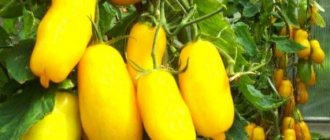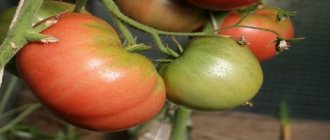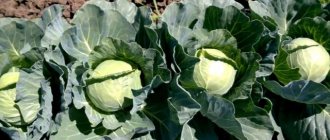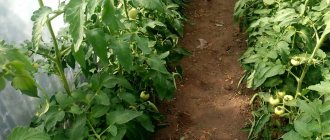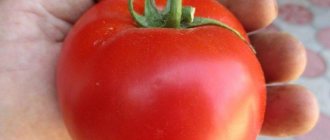History of selection
North America is called the homeland of blackberries, where breeders have been growing new varieties and types of crops for more than 200 years. Doyle is a new variety of American selection. It is considered a real pride of breeders, as one of the best thornless varieties.
It can safely be called one of the most productive varieties in the world. Today the culture is very widespread, and is most popular in America, Western Europe and the CIS countries.
Did you know? The variety is considered as a representative for the title
“
The most productive blackberry variety in the world
”
according to the Guinness Book of Records.
In 1970, the American Tom Doyle discovered a plant in his own garden, on the branches of which there were so many fruits that he had never seen in any crop before. After this, a group of scientists from the Purde Agricultural University began researching this variety.
As a result, it was found that the thornless variety completely retains its characteristics when propagated, like many other thornless varieties. The Doyle family, Tom and Louise, continued to work with the blackberry variety they found for several years. After measuring the exact amount of the annual harvest, about 70 kg came out of the bush, which was a real sensation. Later, several newspapers published the news.
Doyle bushes were displayed at the Agricultural Expo Hall in Bonner Springs, Kansas. Visitors were so amazed by the exhibit that, after some time, Tom decided to register a patent for this variety and wanted to get a record harvest and register it in the Guinness Book of Records. The official originator of the variety is the American farmer Severston. In 1994, he received the rights to propagate and sell Doyle blackberry seedlings.
Read more about the Doyle blackberry variety
Here is a translation of an article by the copyright holder of this variety.
“Doyle is a thornless blackberry that produces 20 gallons per plant.” Many people, after reading the inscription, come to us out of curiosity, because it sounds implausible. I must admit that I thought the same thing myself when I read Tom and Louise Doyle's advert in an agricultural magazine 10 years ago. I was sure this was a typo and that instead of 20 gallons (1 gallon = 3.78541L, 20 gallons = 75.7082L) they meant 2 gallons (7.5L), which was also a huge harvest. At that time we purchased 100 bushes from the Doyle family at a cost of approximately $20 each. Along with the plants, we purchased a book on caring for this blackberry. We were amazed by what we read about this wonderful blackberry. In 1970, Tom Doyle found in his garden a plant with such a large multi-berry cluster that he had never seen before. Scientists from the Agricultural University of Purde studied the variety and found that this thornless blackberry retains its thornless nature during propagation, like many thornless varieties. Tom and Louise worked with this blackberry for several years, and when they measured the unusually large yield that this variety produced each year, they came up with a figure of 20 gallons per bush.
Later, several newspapers attested to this. Visitors to the Agricultural Exposition Hall in Bonner Springs, Kansas were so impressed by the Doyle bushes on display for several years that after many years of cultivation, Tom filed a patent for this variety (in 1977) and intended to achieve a record harvest from his blackberries to register it is in the Guinness Book of Records. He still hasn't done it, and I could make Tom's dream come true. In 1994, I acquired exclusive rights to propagate and sell Doyle blackberry seedlings. The idea of setting a record could become a national competition for thousands of our clients. This would be a great gift for Tom, who turned 100 in June 2000. Doyle blackberries, like other blackberries, have 2 types of shoots. In the first year, replacement shoots develop that will bear fruit the following year. In the second year they bloom and bear fruit, after which we immediately cut them out so that all the energy goes into the development of new young replacement shoots. Blackberries are usually prickly and thornless. Most thorny varieties are erect because they have stiffer shoots. But they still need to be tied to a trellis. All blackberry varieties produce greater yields when the growing replacement shoot is pinched at a certain point in its development. It is necessary to pinch the main shoot of the plant about an inch from the growing point at the proper time, then the plants will set 50-75 fruit buds. Next year, fruit buds will produce 50-75 fruit branches with large, branched berry clusters. On each long berry cluster, along its entire length, lateral branches extend from the main axis, on each of which there are from one to five berries. A mature Doyle bush produces 250-300 branched clusters of berries, which are located every 2-8 inches (5 - 20 cm) on the fruiting shoot. The grape-like berry clusters have up to 100 berries in two to three clusters. This huge number of berries is not the product of one long side branch, as we see in a grapevine, when a flower bud produces a long vine and a single cluster at its base. The berry clusters hang so densely that there is a much larger number of berries on a much smaller vegetative mass of shoots than on a grapevine. We usually leave 4 to 7 main shoots in a mature Doyle blackberry bush, which we pinch back once they reach 12 feet (3.66 m) in length. When planting, we recommend digging a hole approximately 2 feet (0.6 m) in diameter and approximately 8 inches (20 cm) deep for best results. Keep in mind that blackberries require good nutrition. Mix the excavated soil with compost or humus in a 1:1 ratio and fill the hole with this mixture around the roots of the bush. Then water well and compact the soil. Spring is the most preferred time for planting Doyle. We recommend growing Doyle on a seven-foot (2.1 m) trellis. For a small garden, you can use a garter to an ordinary tall stake. Tie the replacement shoots to a stake and they will first grow upward, and then, when they reach the top, they will hang down. Then the plant will form flower buds, which will produce berry laterals (branches) hanging in a cascade. In the spring, the laterals bloom many hundreds of flowers resembling lilac clusters, and large clusters of berries form soon after.
In cooler areas, people with little extra labor will be able to grow the same crops as in the hot climate of the Southwest. In the North, gardeners must cover shoots in case of early frosts if temperatures drop sharply to -20 - 25 F (11.2 - 14 C) before the plants have time to prepare for winter frosts. The covering, approximately 6 inches thick, can be made of compost or various synthetic materials. In hot regions, plants need to be shaded. People in such areas should plant bushes on the east side of their house or next to a wooden fence. Mulching the soil is a mandatory element of agricultural technology to retain moisture under the bushes. We mulch the rows with 4-5 inches (10-13 cm) of compost in 4-foot (1.2 m) strips on either side of the row centerline. For smaller plantings, mulch can be applied in a 3- to 4-foot (0.9 to 1.2 m) circle around the plant. Watering from a hose is suitable for small plantings with only a few bushes. In this case, you need to ensure that the soil is moist, but not waterlogged. On a large plantation, watering is carried out by drip irrigation systems. Once a week we spray water onto the leaves from a 150 gallon feeder that I pull with a tractor. Blackberries respond well to water sprayed on the leaves with fertilizer. In a small garden, you can use a portable spray bottle. We use two or three types of fertilizers, including biochemistry. Like any other variety, Doyle requires care and adherence to agricultural techniques, which largely ensures success. The yield of just one bush of the Doyle variety sometimes corresponds to the harvest of 30–50 plants of other varieties at a price of $1 per seedling, which will bring an additional $30–50 in income, which can be invested, for example, in more seedlings. It should also be noted the difference in the place for planting one or fifteen bushes. One Doyle bush costs $15 plus $3 shipping, and this investment will provide your family with berries for the entire season.
Will I really get 20 gallons of berries from the bush? - Most likely 3 to 5. But with good weather, fertile (fertilized) soil and proper watering, you can get 20. Other varieties usually produce a quarter to 1 gallon of berries under ideal conditions.
Botanical description
The blackberry bush of the Doyle variety is semi-erect, branched, the shoots are located horizontally. The length of the shoots is about 4 m, and there are no thorns along the entire length. The lower branches are very long. The large palmate leaves are divided into five distinct sections.
There are two types of escapes. The first ones develop throughout the year, and already in the second year they bloom and bear fruit. After this, they are usually pruned immediately so that there is enough energy left for the formation and growth of new young shoots.
The berries are medium in size, their weight reaches from 5 to 8 g. They have a rich dark color. The fruits are slightly elongated. Fully ripe berries are very aromatic, sweet and sour, very pleasant taste.
Description of the variety
The Doyle variety was developed in America. At the moment, the copyright holder of the variety is the Doyle family, which is the only supplier of planting material. You can also order to Russia, but the cost is steep and is $20 excluding delivery. At the moment, seedlings of the variety can be purchased in Russia from the famous blackberry expert V.V. Yakimov. at a price of 700 rub. a piece.
Main characteristics:
- Absence of thorns along the entire length of the shoot.
- Semi-erect bush.
- Long-term abundant fruiting.
- Compound palmate leaves consisting of five individual leaflets.
- Long lower branches.
- The fruits are slightly elongated, black, medium in size (6-8 g).
- Medium-late ripening dates (beginning - late July, ending - mid-September). The data is for Central Russia.
Characteristic
The variety is popular due to a number of its positive characteristics and qualities. The distinctive features of the variety help it remain a leader and be in great demand among summer residents.
Drought resistance, frost resistance
The culture is characterized by very high drought resistance. The fruits can remain on the bush for a long time without softening.
This leads to the following positive characteristic of the variety - good transportability of berries. The fruits can also be stored for more than a week, while their presentation is completely preserved. The plant has average resistance to frost and is resistant to pests and fungal diseases.
Productivity, fruiting
The Doyle variety has an average ripening period, as well as a particularly long fruiting period. The period of active fruit appearance of the variety begins at the end of July and continues until mid-October.
The duration of fruit bearing may vary depending on weather conditions and the quality of plant care. The harvest is harvested around the end of September. The maximum fruit yield is characterized by a record amount, reaching 50 kg.
It is this, as well as the pleasant taste of the berries, that in addition allowed the variety to become a leader among the most popular and sought-after types of blackberries among gardeners and summer residents of the Moscow region. One brush of a bush can contain about 100 fruits, while the plant itself can have up to 300 brushes in total.
Advantages and disadvantages
Like any other, the Doyle blackberry variety has both positive and negative sides. To get the maximum yield and benefits from the plant, it is important to study all the features of the variety.
Did you know? Blackberries can improve memory, strengthen the nervous system, lower fever, cleanse the body of toxins and even quench thirst.
- Advantages of the Doyle blackberry variety:
- high resistance to frost and drought;
- good transportability and long storage;
- not demanding in care;
- resistance to pests and diseases;
- very high yield and long fruiting;
- The fruits are quite large in size.
- Disadvantages of the Doyle blackberry variety:
- high price for seedlings;
- since the variety is new, it has been little studied and insufficiently researched;
- The taste of the berries is quite sour.
Blackberry Doyle: variety description and characteristics
Blackberry Doyle: video
As we noted earlier, the Doyle blackberry variety was bred by American breeders. Its productivity is high. Doyle's seedlings come to our country from international markets. However, you should take into account the fact that plants are really not cheap. Usually one seedling is purchased for 500-700 rubles. If we talk about the main characteristics of the variety, it should be noted that the bushes of the plants are semi-erect, there are no thorns, the crop bears fruit abundantly and for a long time. The leaves have a complex shape, they consist of several individual leaves. The shoots from below are quite long, the berries themselves are small, medium in size, one blackberry will weigh about 7-8 g. It begins to ripen early.
Video: Blackberry Doyle
Deadlines
The best time to plant blackberries is early spring. In spring, the plant should be planted as soon as the soil warms up. Often this period falls in the first half of April. However, it will be better if you rely on weather conditions.
There are a number of advantages to planting in spring: the seedlings will be able to gradually build up the root system, the shrub without haste produces buds, which in due course begin to bloom. However, even during this period there are dangers for the development of the plant, so some points need to be taken into account.
Since the soil quickly loses moisture in spring and is very susceptible to drought, the bushes should be watered regularly. If you were unable to plant in the warm season, you can devote time to this in early autumn or at least a month before the onset of frost.
Important! If blackberries are planted in the fall, the above-ground part should be shortened by about 20 cm, and the plant should also be covered for the winter.
Planting in autumn should be done in September or early October. Then the seedlings will have enough time to take root. They will be able to get stronger to withstand the winter. If planting is done less than a month before the onset of cold weather, frost will simply destroy the fragile seedlings.
Selecting a location
For the quality growth and development of the plant, it is very important to find the ideal site for planting. For planting blackberries, they usually select well-lit, maximally sunny, well-drained places, warm, well protected from strong winds.
As a last resort, you can plant in partial shade, but a bush that grows in shade will not give good results. In this case, the berries will become small and sour.
Doyle blackberries do not thrive in rocky or marshy areas. Loamy soil is best suited, but carbonate soil is absolutely contraindicated. Bushes planted in sandy soils will also require special care conditions.
It’s good if you manage to plant the plant in an area that covers some kind of building. Thus, the bush will be well protected from drafts. But it is important to remember that the distance from the bush to the fence should be more than a meter. Blackberries also do not tolerate groundwater located nearby, so if water usually stagnates in the area, it is very important to provide high-quality drainage.
Selection and preparation of planting material
One of the most important stages when planting a crop is the correct choice of seedling. First of all, you should choose where to buy planting material.
Check out
What does blackberry get along with and what is incompatible with it? A nursery is best suited for this, since the chances of acquiring a healthy seedling in this case increase significantly.
Most often it is recommended to purchase seedlings with a closed root system. It is believed that this option will not cause unnecessary trouble with planting, and the seedling itself will quickly take root.
After this, it is important to carefully examine the pot and the planting material itself.
A healthy annual seedling is characterized by a well-developed root system.
The soil should be slightly moist, but under no circumstances wet. It is important to ensure that no foreign odors come from the soil. There should be a formed bud on the roots, and the plant itself should have two stems. The wood of a fresh seedling should be green in color. Before planting, the roots of the plant must be well straightened.
Planting scheme
The principle of planting seedlings is as follows:
- Before planting, you must prepare the soil. First of all, dig up the soil and apply fertilizer.
- Dig holes measuring 40 x 40 cm. The entire root system should fit completely into it. The distance between them should be at least 2 m. The holes should be ready 15–20 days before planting.
- After this, organic and mineral fertilizers should be applied. For clay soil, river sand or peat are suitable. Fertilizers must be mixed with the soil to prevent the roots of the seedlings from touching them.
- Straighten the roots and place the seedling in the hole.
- Plant the bushes at right angles and sprinkle with soil.
- The growth bud should be buried several centimeters.
- Cover with soil and compact the soil.
- At the end of planting the seedlings, water the bushes generously with water - 10–15 liters for each seedling.
- You need to drive a peg near each seedling. After this, tie the branches to it. When planting plants in rows, you need to install trellises.
Important! When planting blackberries of the Doyle variety, you need to take into account that the distance between the bushes should be greater than the distance between the rows. This situation is due to the presence of long horizontal branches in the variety, which can be up to 4.0 m.
Landing
Doyle blackberries can be planted in the fall (about a month before frost) or in the spring (in April-May).
Important! The site chosen for Doyle's blackberries should be well lit and protected from the wind.
Before planting, you need to carefully cultivate the soil: dig up the ground, lay drainage in the holes, add compost to improve air exchange in clay soil or to retain moisture in sandy soil. It is important to check the acidity of the soil, since in a slightly acidic environment (pH from 5.0 to 6.5) the taste of the berries improves. If the soil is acidic, then lime, dolomite flour or ash are added to it.
Important! Rocky and marshy areas are not suitable for Doyle blackberries; sandy soils should also be treated with caution.
Next, they install trellises (the simplest option is a single-strip trellis, which consists of metal pipes clogged at intervals of 3-5 meters, between which wire is stretched) and apply fertilizer.
For each planting hole you will need:
- 5 kg. compost;
- 120 g superphosphate;
- 40 g of potassium sulfate.
All elements are mixed with soil and the resulting mixture is filled with two-thirds of the hole.
Planting holes are prepared 15-20 days before planting. They should be large enough (approximately 40*40*40 cm), so that the entire root system of the seedling can be accommodated with a reserve. The distance between holes is 2.0-2.5 m, the distance between rows is 1.8 m. Blackberry Doyle is a rare case when the distance between bushes is maintained greater than the distance between rows. This feature is associated with long horizontal branches that can reach 4.0 m.
Before planting, the roots are straightened, then the plant is placed in the hole, the roots are sprinkled with soil and the soil is compacted (to get rid of air pockets).
After planting, 10-15 liters are added to each seedling. water. Subsequent watering should take place regularly so that the soil is always slightly moist for the first 2 months after planting.
Important! The mesh will not support the weight of the bush, so it is better to choose heavier structures as support - metal structures or strong wooden blocks.
Rules of care
The plant itself is unpretentious in care and does not require much effort during the growing process. In the first year after planting, the seedling begins to grow its root system, so it is very important to regularly water the plant intensively. Blackberries of the Doyle variety require especially abundant watering during flowering, ovary and fruiting.
Check out
Proper spring care of blackberries for a large harvest
During the period of active rains, the bushes do not need to be watered. Watering should be about 15–20 liters per week per bush. Every time after watering it is necessary to loosen the soil. It is also very important to promptly remove weeds, which take energy and nutrients from the plant.
An equally important element of plant care is fertilizer and feeding. Nitrogen fertilizers are usually used in spring. Phosphorus is also added during the fruiting period, and potassium is added in the autumn. The variety also responds positively to fertilizing with chicken manure.
To get the maximum benefit from fertilizers, it is recommended to periodically change different types of fertilizing. Mulching is also a must. Pour compost, straw or peat under the bush in a layer of about 10–15 cm.
To maintain air in the soil, you also need to regularly loosen the soil around the bushes. The first time it is carried out in the spring, immediately after the end of the cold weather. In this case, this is done for convenience in picking berries. This also helps distribute uniform lighting.
In order to tie up a bush, you need to tilt the young shoots in one direction and leave the fruit shoots in the other.
Gartering is also carried out in the autumn after harvesting. They do this in order to prepare the plant for winter. The branches are tied and placed on the ground in a horizontal position.
Also, do not forget about pruning and shaping shrubs. Immediately after planting, the seedlings should be shortened by 20 cm. After this, the shoots should be trimmed twice a year. In the spring, light pruning is carried out, cutting off only dried stems and frozen branches. This frees up space for young shoots.
In the fall, all weak, dry, outdated and fruit-bearing branches are usually removed to the roots. Old branches will no longer bear fruit, and the bush, in turn, requires strength to develop fresh shoots.
Reviews
I have been growing Doyle on my plot for several years. I reached the peak of productivity somewhere in the 3-4th year; for the first 2 years I tore off all the buds so that the shoots and root system could develop. I think I didn’t do it in vain, because... kg. I have 20 from each bush. Another thing is that I don’t like the taste of this blackberry - it is very sour and belongs more to the technical varieties rather than the dessert ones. Therefore, my family practically does not use it fresh, but the variety’s berries are ideal for harvesting. My favorite is blackberry wine. It turns out very fragrant and also healthy. I read in the literature that it is the blackberry alcoholic drink that lowers blood pressure. I am hypertensive, I decided to try it, about 100 g of wine in the evening reduces my blood pressure by 20 units.
There are many rave reviews about the presented variety. Gardeners love it for its fairly easy care and high productivity. However, regarding the taste of fruits, opinions vary, but, as they say, there are no comrades for taste and color, so you need to plant, taste the berries and share your impressions. Maybe thanks to our common efforts, Doyle blackberries will become as popular in Russia as in their homeland.
Harvesting and storage
The best time for harvesting is August. All fruits should be collected from the bush gradually, as they ripen. The fruits are well transported. When cleaning, they do not become deformed and retain their presentation and presentable shape. However, you should not delay harvesting, as the fruits begin to deteriorate quickly.
The berries are also not stored for a long time, even in the refrigerator, so they need to be disposed of as quickly as possible. Blackberries can be made into jam, jam, used as a filling or decoration for desserts, frozen or consumed fresh.
Blackberries: choosing a variety (video)
The advantages of this variety also include the increased resistance of the berry bush to drought and watering that is very limited in quantity and volume. Ripe berries do not fall off for a long time and are perfectly preserved on the bushes until harvest. The Doyle's variety is characterized by experienced gardeners and novice summer residents as having increased transportability of the harvested crop. Ripe berries perfectly retain their taste and presentation for a week or more.
Preparing for winter
To protect the shrub from frost, you should use some rules for preparing the plant for winter. In order to protect the shoots from contact with cold soil, the root part must be covered with boards.
Before the onset of severe frosts, the shoots need to be connected into bunches and bent to the ground. They are also tied with hooks or wire. After this, the shoots are covered with material made from sawdust, peat or humus. It is also necessary to shovel snow towards sheltered bushes.
We recommend reading: When to remove winter cover from blackberries?
a brief description of
Advantages of the variety
- High frost resistance.
- Unique yield.
- Excellent transportability and keeping quality.
- Resistance to pests and diseases.
Disadvantages of the variety
- Pronounced acidity in taste (opinions about the taste are contradictory; many gardeners, on the contrary, write that the berries are sweet and superior to many other varieties in this regard).
- High cost of seedlings.
- Little knowledge, almost complete absence of reviews about cultivation in Russia, or they are very contradictory.
Reproduction methods
To increase the plantation of blackberry varieties, they can be propagated in various ways. This can be done using shoots, layering, cuttings and seeds. The Doyle variety does not produce young shoots, so propagation by offspring is not suitable for it.
The easiest way to propagate blackberries is using apical shoots. The apical vines of blackberries take root very easily. At the end of July, you should bend the young shoot to the ground, and then sprinkle the top with damp soil. The tips form roots within a month. In spring, seedlings are separated and planted in the ground. For the winter it should be covered tightly.
The method of propagation by horizontal layering is also considered very popular. At the beginning of August, you should pick up the shoot and lower it to the ground, but do not separate it from the bush. Dig in and moisten the shoot, leaving the top. After 1–2 months, the shoot will take root, after which the young bush should be replanted.
One of the most difficult methods is propagation by cuttings. This is usually done in winter. Cuttings should be prepared in the fall. They must be larger than 8 mm. The roots are left on the surface of loose soil and then buried 2 cm deep.
After a few days, shoots appear. Young bushes are planted only after the onset of warm weather, and before that they need to be stored in the refrigerator. You can root the cuttings in a greenhouse or greenhouse.
However, the most difficult type of propagation is considered to be the method using seeds. The seeds are quite difficult to germinate, so they should be soaked in a sulfur solution in advance. And after that, keep it in melt water for about another day.
After this, the seeds are mixed with moistened soil and left in the refrigerator for 2 months. After the seeds have been taken out and sifted, you need to wait for the leaves to appear. Only after this are they planted in the garden.
Blackberry Doyle: cultivation and care
Blackberry Doyle: photo
Doyle blackberries need to be watered quite intensively, this is especially often done during the period of flowering and fruiting of the bush. On average, up to 20 liters of water will need to be poured under each bush. After you water the plants, do not forget to loosen the soil. With this simple procedure you can get rid of weeds, as well as improve the air and water permeability of the soil. If we talk about pruning the crop, then the newly planted bushes need to be shortened so that in the future the blackberries will grow more intensively. Thanks to this event, the side shoots develop more actively. Remember to remove diseased branches in early spring so that new branches can grow on the blackberry. It is also recommended to remove fruit-bearing shoots so that plants do not waste their energy on them; blackberries usually form on one-year-old shoots, so branches that are too old must be trimmed. It should be noted: pruning is carried out either in the fall or in the spring. And don’t forget about anti-aging and sanitary pruning. All frozen branches should be removed at the root. At the same time, there is no need to leave any stumps, because rot often accumulates in such places in winter, and various pests also settle in, so it is not recommended to leave such foci of infection on the site. If we talk about fertilizing, it should be noted that it is best to add nitrogen-containing fertilizers to the soil in the spring so that the plants intensively increase their green mass. During the fruiting period, mineral fertilizers containing phosphorus and potassium are usually applied to the soil. Do not forget about mulching the tree trunk circle. Sawdust, straw, dry grass, and compost are used as mulching material. The mulch layer should be approximately 10 cm thick. Sometimes in the summer, gardeners also recommend feeding plants with diluted chicken droppings, but the concentration of this substance in the solution should be small, otherwise the bushes may get burned, and do not forget to treat the plants against pests and diseases. If you notice that a whitish coating has appeared on the foliage, this indicates an infection with powdery mildew. Usually, all diseased parts are removed from the bushes, the plantings are pruned and treated with fungicides. Sometimes the treatment is repeated after a few days. Spider mites and raspberry mites also often settle on blackberry bushes. In order to get rid of these harmful insects, you need to treat the plant with onion tincture in time, spraying the plants with the resulting solution. In order to get rid of anthracnose, you will need to remove the affected parts of the plants. You can get rid of purple spotting by spraying the plants with Bordeaux mixture. Moreover, this procedure is usually carried out in the spring. Plant transplantation is used as a preventive measure. Compliance with the rules for caring for blackberries also guarantees the development of plant immunity. It is not recommended to plant nightshade crops nearby; they have a negative effect on plants. The fact is that these families have many common diseases and pests, so it is best to grow these plants separately from each other. Blackberries are prepared in advance for winter. Before the cold weather arrives, you will need to collect blackberry shoots in a bunch and cover them with sawdust, peat, humus, and agrofibre. Use materials you have on hand. You can secure the shoots in a bundle using wire or rope. If your region usually has little snow in winter, then do not forget to shovel snow to the shelter. But remember, pests often settle under the film, and in the spring they actively begin to multiply and spread throughout the area, so inspect the plants in time.
Diseases and pests
Like any other plant, Doyle blackberries are susceptible to attack by pests, as well as the development of various diseases, so it is very important to know the symptoms of diseases, as well as methods of control and prevention.
Check out
Diseases and pests of blackberries: symptoms, treatment If the plant is affected
by powdery mildew, a white coating appears on the leaves. In this case, all affected areas of the bush should be destroyed, the plantation should be thinned, and the plant should be treated with fungicides three times. The same actions will also help with gray rot.
If blackberries are damaged by raspberry or spider mites , which are considered one of the most popular pests of the plant, you need to urgently treat the bush with an infusion of onion peels. The procedure must be repeated 5 times, each of which is done after 7 days.
You can often notice gray spots on the leaves of the plant, which is accompanied by drying of the green berries, as well as their subsequent falling off. Purple spots appear on the stems, and the fruit shoots begin to dry out. These are signs of anthracnose . In this case, you only need to destroy the plant to prevent infecting others. The variety is susceptible to purple spot . For prevention, it is important to keep the area clean and thin out the plantings.
To protect blackberry varieties from diseases and pests, you should plant them away from tomatoes, peppers, strawberries and other plants from the nightshade family, since the plants are susceptible to common diseases and pests.
The Doyle blackberry variety is very popular and does not require care. Thus, it is well suited for summer cottages and will give a bountiful harvest to the delight of the owners. The berries can be used both for processing and for fresh consumption.
Advantages and disadvantages of Doyle blackberries
If we talk about the advantages of the variety, we should mention the high frost resistance of the plant. Blackberry productivity is also excellent, as we have noted more than once. The product does not deteriorate during transportation and is perfectly stored. Plants are quite resistant to diseases and pests. However, this variety also has its drawbacks. The first of them is the rather high price of seedlings, so blackberries may not be affordable for many gardeners. Another disadvantage is that the berries are not very sweet in taste; a pronounced sourness is noticeable in the blackberry juice, but not all gardeners speak in this way about the taste of these fruits. Unfortunately, there are not many reviews about growing this crop in our country, so in many cases you will have to research the rules of planting and care yourself.


